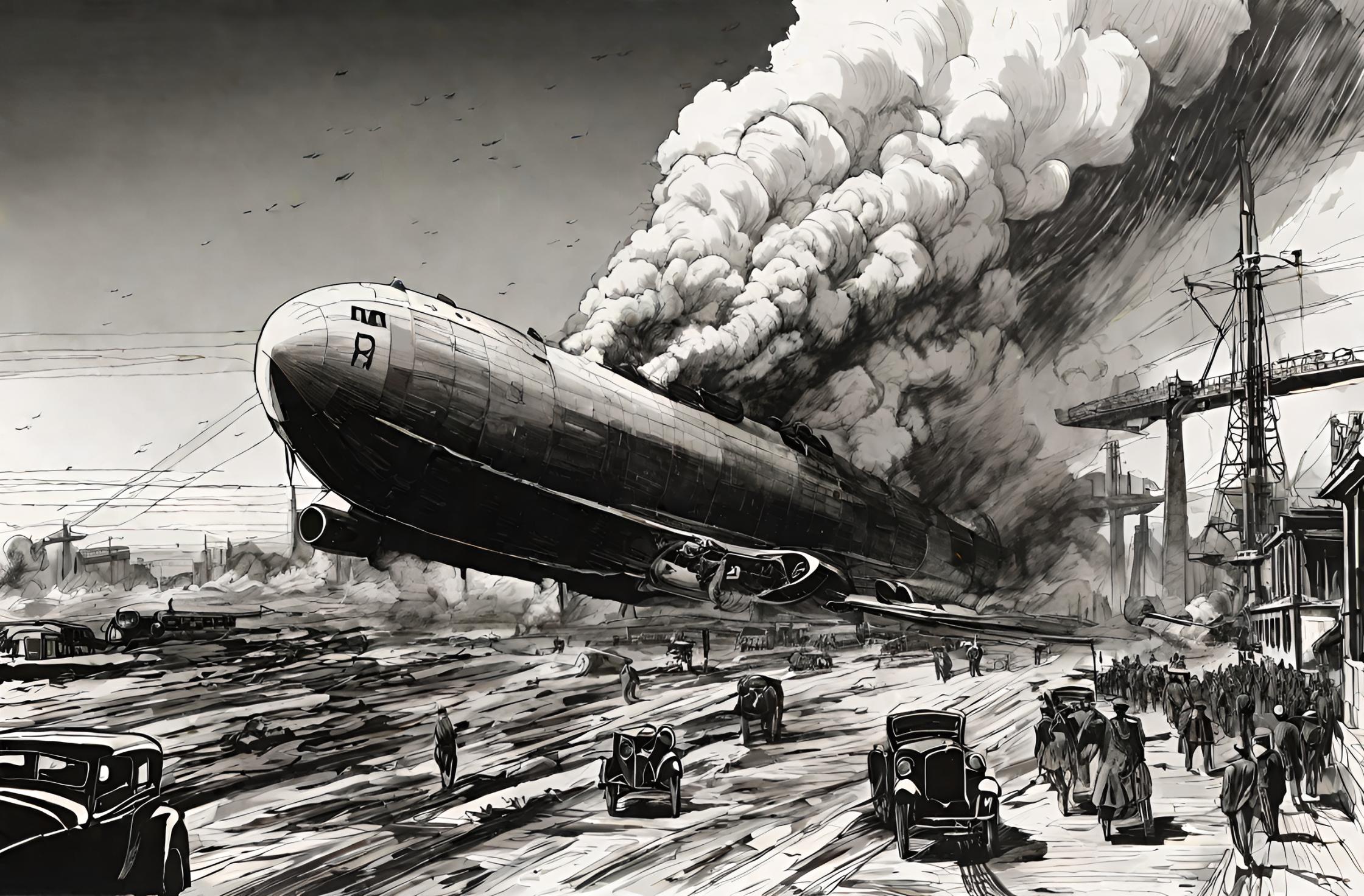Flashback to October 31
World History

The German zeppelin Hindenburg has become synonymous with airship disasters. On May 6th, 1937, an event unfolded that would reshape the course of aviation history. The immense and grand Hindenburg, known for its majestic and regal flights, fell victim to a catastrophic event. While attempting to dock in Lakehurst, New Jersey, it tragically caught fire, leading to the loss of thirty-six precious lives.
The Hindenburg was not just any ordinary airship. Its massive size and luxury details personified the desires and aspirations of an era looking for advancements in transportation and technological excellence. It represented a new age of air travel. This momentous event not only marked a significant milestone in aviation history but also became etched in our collective consciousness as the Hindenburg disaster.
Upon the Hindenburg’s application of its braking rockets to enable a safe docking, something went terribly wrong. It took less than a minute for the entire airship to become engulfed in a gut-wrenching inferno, transforming the once majestic Hindenburg into a towering torch. The heat was so intense, and the fire spread so rapidly that the zeppelin was destroyed within moments. It was a shocking scene that highlighted the significant risks associated with hydrogen-filled airships.
Witnesses of the disaster recall the horrific sight of the burning airship and the desperate attempts of the crew and passengers to escape the fire. As the enormous structure was reduced to a smoldering skeleton in a matter of seconds, the lives of thirty-six unfortunate souls were abruptly ended. The horrifying spectacle of the disaster, captured by newsreel cameras and broadcasted worldwide, left a lasting impression on the public.
While several theories surfaced regarding the cause of the fire, many experts agreed on one point — the Hindenburg was filled with hydrogen, a highly flammable gas. Under certain conditions, hydrogen can react with air to create an explosive mix. These exact conditions were present on that fateful day, leading to the Hindenburg disaster.
The destruction of the Hindenburg led to a steep decline in the popularity of airships. The public’s faith in the safety of airship travel was deeply shaken, leading to a shift towards airplane travel. Interestingly, the shock and horror of the Hindenburg disaster helped fuel significant advancements in airborne travel safety. It also underscored the necessity for effective safety protocols and led many to the realization that the world of aviation was not yet onboard with these safety measures.
In its aftermath, the Hindenburg disaster has left a profound impact not just on the aviation industry but also in popular culture. It has been the subject of numerous documentaries, films, and songs, leading to an enduring historical fascination with this fateful incident.
More than eight decades later, the story of the Hindenburg disaster remains etched in our collective memories as a grim reminder of the swift and deadly potency of fire. At the same time, it serves as a stark reminder of progress and how the aspiration for technological superiority can sometimes come at a tremendous cost. We remember the Hindenburg disaster, not to dwell on the tragedy that it was, but as a step towards rectification and the advancement of aviation safety protocols to ensure that such an event never repeats in the future.
We strive for accuracy. If you see something that doesn't look right, click here to contact us!
Sponsored Content

Benito Mussolini (Il Duce)…
Discover the momentous event…

Execution of the Girondins…
Witness the horrifying historical…

Indian Prime Minister Indira…
"Indira Gandhi's assassination in…

The Boy Scouts of…
Established on October 31,…

Reza Pahlavi, eldest son…
"Reza Pahlavi, son of…

EgyptAir Flight 990 traveling…
The tragic crash of…

